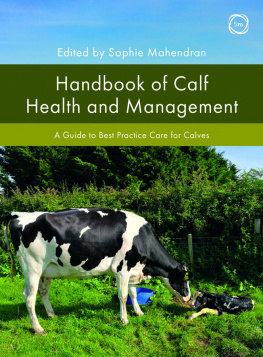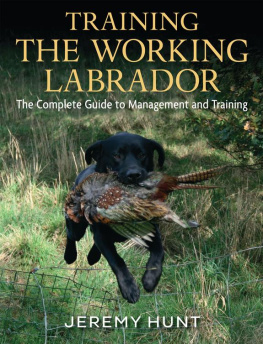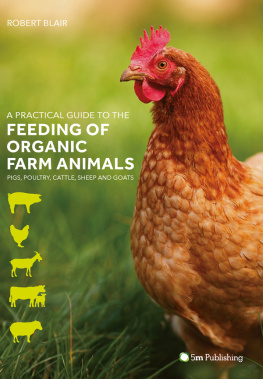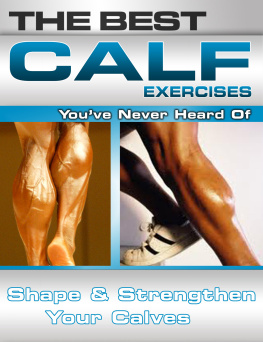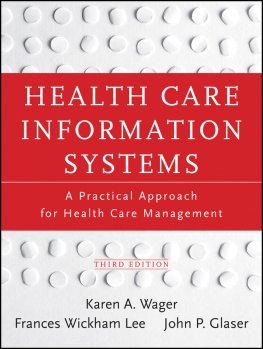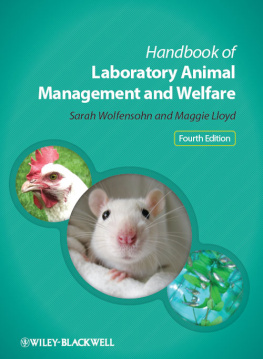All rights reserved. No part of this publication may be reproduced, stored in a retrieval system, or transmitted, in any form or by any means, electronic, mechanical, photocopying, recording or otherwise, without prior permission of the copyright holder.
This book is dedicated to everyone who works tirelessly to ensure the safety, health and welfare of the calves in their care. While there are many jobs to juggle on farm, in the words of Ron Swanson: Never half-ass two things. Whole-ass one thing.
Contents
Claire Wathes and Sophie Mahendran
Sophie Mahendran and Claire Wathes
Claire Wathes
Tom Shardlow and Sophie Mahendran
Esme Moffett and Sophie Mahendran
Nicola Blackie and Claire Wathes
Sophie Mahendran and Claire Wathes
Sophie Mahendran and Richard Booth
Benjamin Barber
Peter Plate
Guide
Editor
Sophie Mahendran, BVMedSci, BVMBVS (Hons), MSc, DipECBHM, MRCVS
Lecturer in Farm Animal Health and Welfare at the Royal Veterinary College, UK
Royal Veterinary College, Regional Veterinary Centre South of England, Stinsford, UK
Business Centre, Kingston Maurward College, Dorchester
Authors
Benjamin Barber, BVetMed (Hons), MRCVS Veterinary surgeon at Synergy Farm Health, UK
Dr Nicola Blackie, BSc, PhD
Lecturer in Production Animal Science at the Royal Veterinary College, UK
Dr Richard Booth, BVSc, PhD, BSc (Hons), MRCVS
Associate Professor in Veterinary Extension Services and Infectious Diseases of Cattle at the Royal Veterinary College, UK
Esme Moffett, BVMS, MRCVS
Veterinary surgeon at Synergy Farm Health, UK
Peter Plate, Dr med vet, MRCVS
Lecturer in Livestock Veterinary Extension Services at the Royal Veterinary College, UK
Tom Shardlow, BVSc, MRCVS
Veterinary surgeon at Synergy Farm Health, UK
Professor Claire Wathes, BSc, PhD, Dsc, FRASE, FRSB
Professor of Veterinary Reproduction at the Royal Veterinary College, UK
Ensuring the future of a dairy herd must start with the health and development of its youngstock only then can a farm build strong foundations that will have long lasting positive results. However, calf health is often under-appreciated and can be overlooked in favour of the adult milking herd when deciding on herd priorities.
This book explains the reasons why successful calf rearing is vital, right from conception, all the way through to first service of heifers. It draws on the authors wealth of knowledge and experience to provide both in-depth science and evidence-based reasoning for decision making in calf health. In addition to this, the authors have first-hand experience of rearing calves, and appreciate that it can be both one of the most rewarding and most frustrating jobs on a farm, often switching between the two on a daily basis!
This book offers some practical tips for both stockpeople to use during day-to-day rearing, as well as tips for vets who are dealing with young-stock herd health. It takes the reader through the important life stages of the calf in each chapter, highlighting common areas for improvement and outlining gold standard practice that we should aim for. Important information regarding legislation is also included for completeness, as well as descriptions of common diseases and health management procedures.
We hope you will find this book to be a useful guide in your future calf rearing enterprises.
| ACF | automatic calf feeder |
| ACTH | adrenal corticotropic hormone |
| ADG | average daily gain |
| AFC | age at first calving |
| AHDB | Agriculture and Horticulture Development Board |
| APHA | Animal and Plant Health Agency |
| BAL | bronchoalveolar lavage |
| BCMS | British Cattle Movement Service |
| BCS | body condition score |
| BHV | bovine herpesvirus |
| BRD | bovine respiratory disease |
| BRSV | bovine respiratory syncytial virus |
| BVD | bovine viral diarrhoea |
| BVDV | bovine viral diarrhoea virus |
| BW | bodyweight |
| CE | calving ease |
| CMR | calf milk replacer |
| CP | crude protein |
| CPH | country parish holding |
| DCAB | dietary cation-anion balance |
| DDD | defined daily doses |
| DLWG | daily live weight gain |
| DM | dry matter |
| ELISA | enzyme-linked immunosorbent assay |
| FEC | faecal egg counts |
| FPT | failure of passive transfer |
| FSH | follicle stimulating hormone |
| GH | growth hormone |
| IBK | infectious bovine keratoconjunctivitis |
| IBR | infectious bovine rhinotracheitis |
| ICS | intercostal spaces |
| LH | luteinising hormone |
| MDA | maternally derived antibodies |
| ME | metabolisable energy |
| MIC | minimum inhibitory concentrations |
| ML | macrocyclic lactones |
| NPS | naso-pharyngeal swabs |
| NSAID | non-steroidal anti-inflammatory drug |
| ORT | oral rehydration therapy |
| PI | persistently infected |
| PIR | parainfluenza virus |
| PLI | profitable lifetime index |
| PTA | predicted transmitting ability |
| RFID | radio-frequency identification |
| RFM | retained foetal membranes |
| ROC | receiver operator curves |
| SARA | sub-acute ruminal acidosis |
| SCC | somatic cell count |
| SNP | single nucleotide polymorphisms |
| TCC | total coliform counts |
| THI | Temperaturehumidity index |
| TMR | total mixed ration |
| TNZ | thermoneutral zone |
| TPC | total plate count |
Claire Wathes and Sophie Mahendran
CHAPTER CONTENTS
Even prior to birth, the future of a calf is being defined by decisions made that lead to conception and development of the fetus. These include parent selection, the effect of genomics, methods of conception, the environmental and management factors affecting the dam (such as nutrition and heat stress). This chapter discusses the choices and impacts of the decisions made in this period, as well as briefly exploring some fertility issues, such as twinning and abortion.

